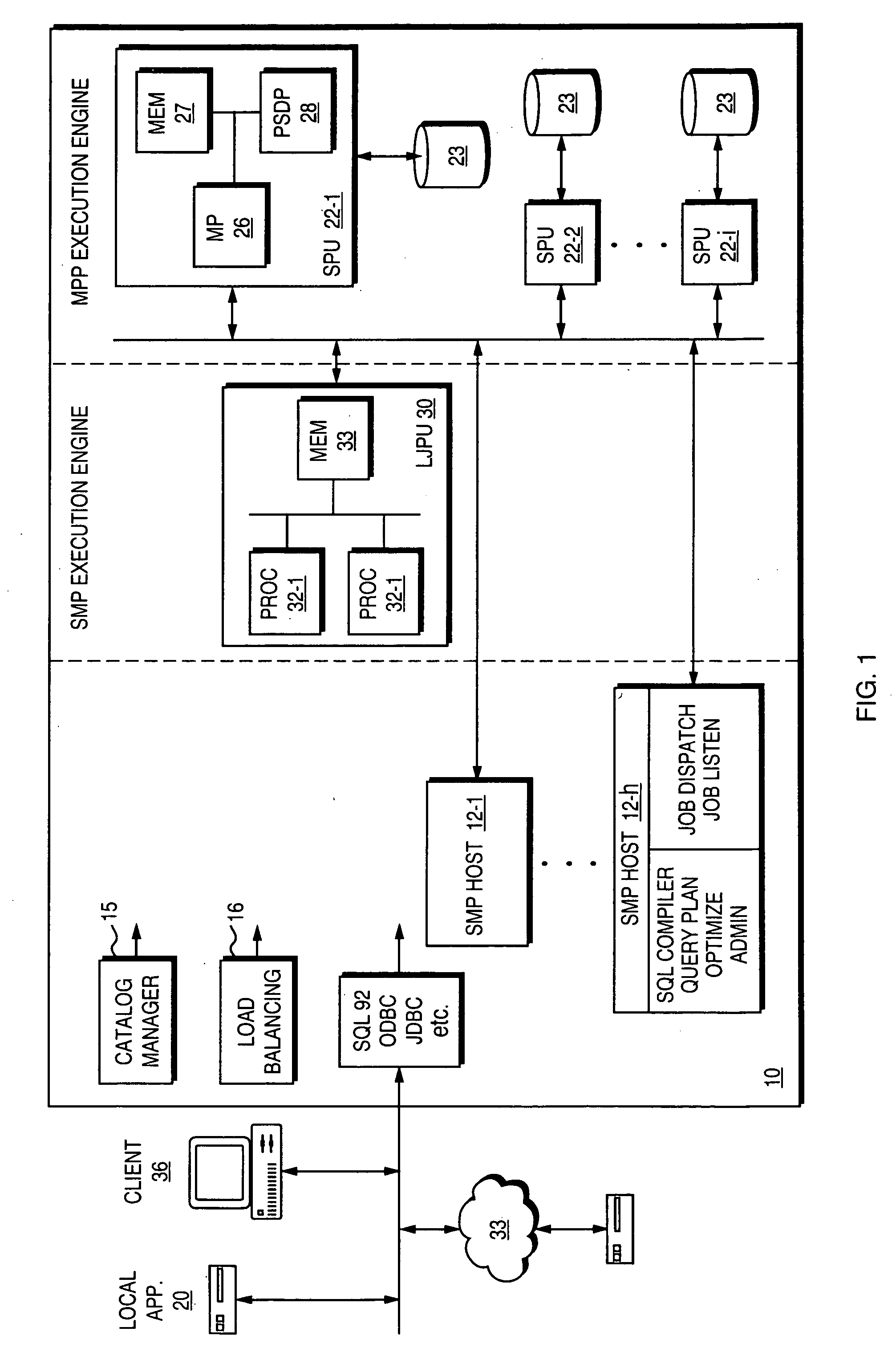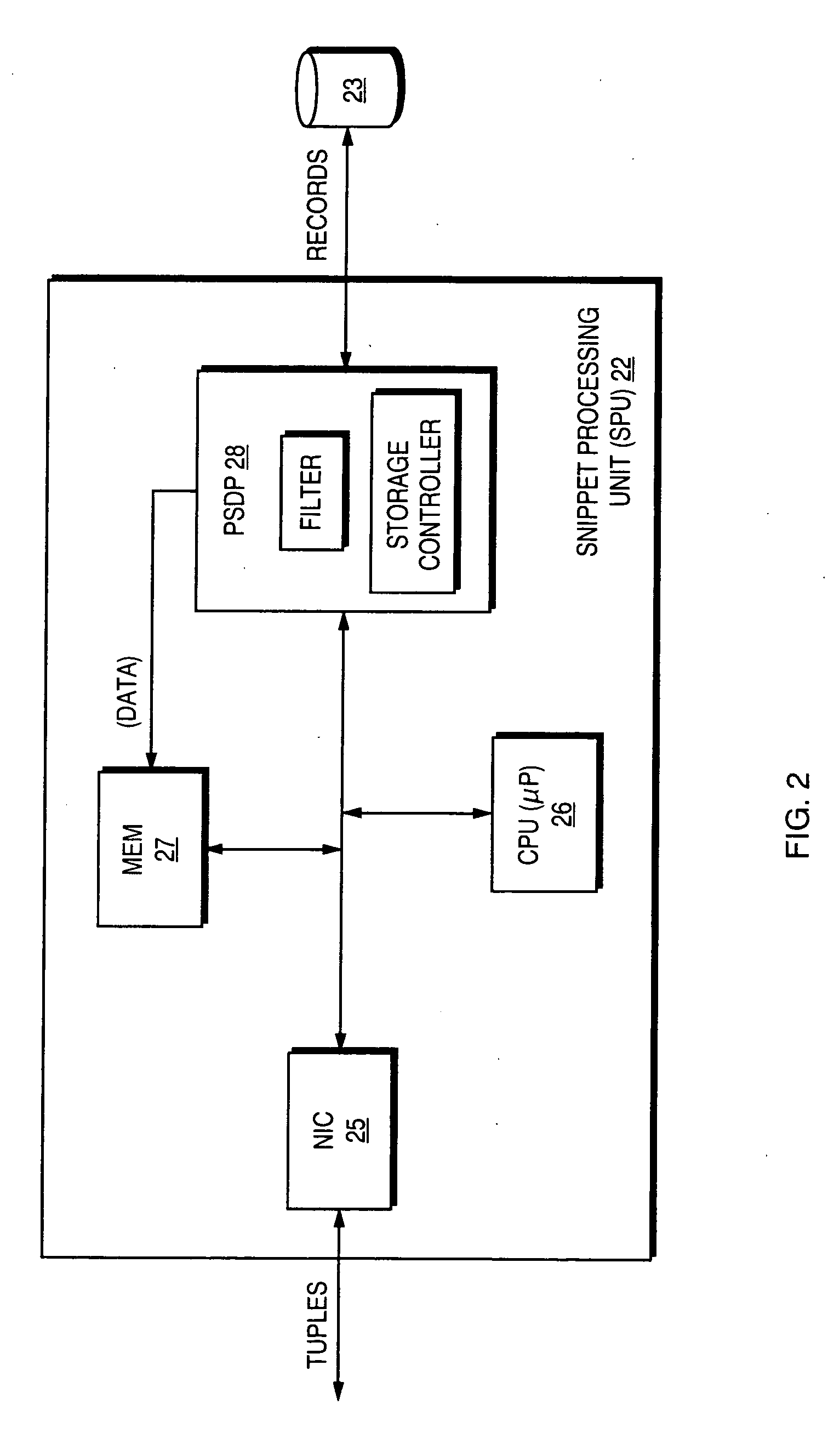Performing sequence analysis as a relational join
- Summary
- Abstract
- Description
- Claims
- Application Information
AI Technical Summary
Benefits of technology
Problems solved by technology
Method used
Image
Examples
Embodiment Construction
[0031] The invention's preferred implementation is on a parallel relational database system where embedded processors acting as intelligent disks communicate through a hierarchical communications fabric to one or more processors (called the ‘hosts’) at the root of the communications hierarchy.
[0032] Other than the host processors, each embedded processor (called ‘Snippet Processing Unit’ or ‘SPU’) consists of a magnetic disk drive, a communications fabric interface, a central processing unit (CPU), random access (RAM) memory and the circuitry required to connect these elements and provide electrical power.
[0033] An example parallel relational database system is described in a co-pending U.S. patent application Ser. No. 10 / 667,128 entitled “Asymmetric Data Streaming Architecture Having Autonomous and Asynchronous Job Processing Unit,” Attorney Docket No. 3336.1016-003 filed Sep. 18, 2003 and which is hereby incorporated by reference; although other system architectures may be used....
PUM
 Login to View More
Login to View More Abstract
Description
Claims
Application Information
 Login to View More
Login to View More - R&D
- Intellectual Property
- Life Sciences
- Materials
- Tech Scout
- Unparalleled Data Quality
- Higher Quality Content
- 60% Fewer Hallucinations
Browse by: Latest US Patents, China's latest patents, Technical Efficacy Thesaurus, Application Domain, Technology Topic, Popular Technical Reports.
© 2025 PatSnap. All rights reserved.Legal|Privacy policy|Modern Slavery Act Transparency Statement|Sitemap|About US| Contact US: help@patsnap.com



